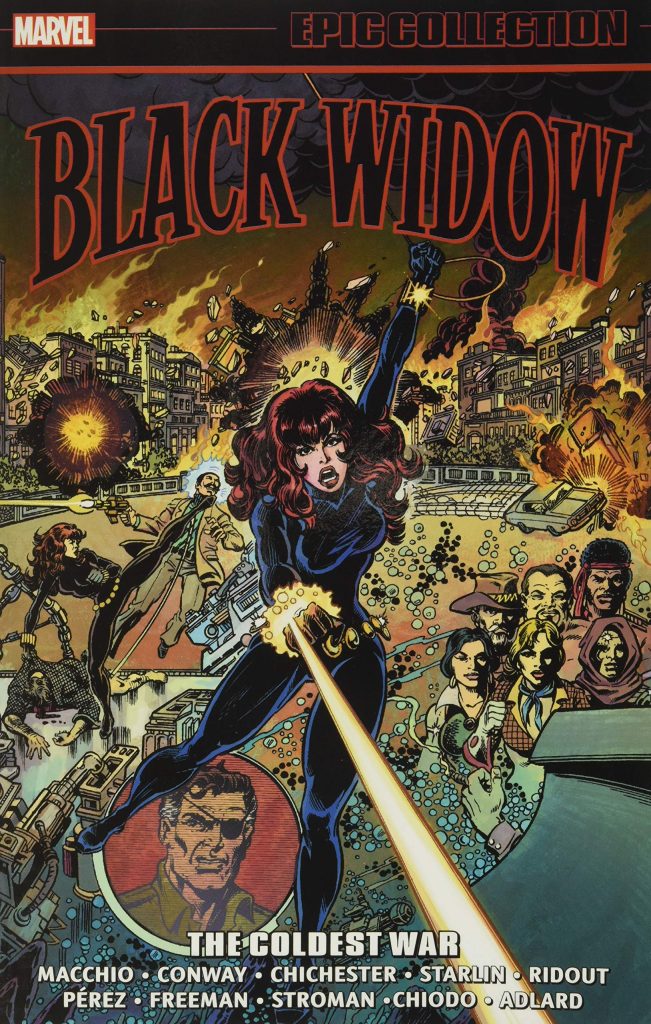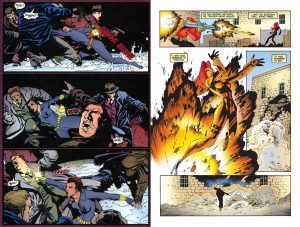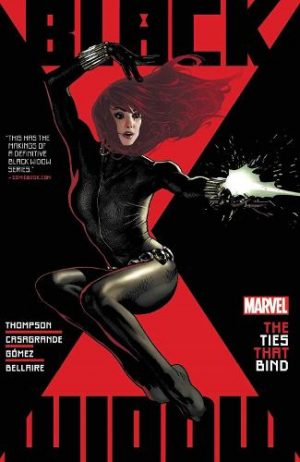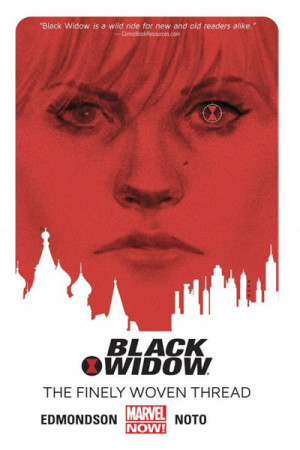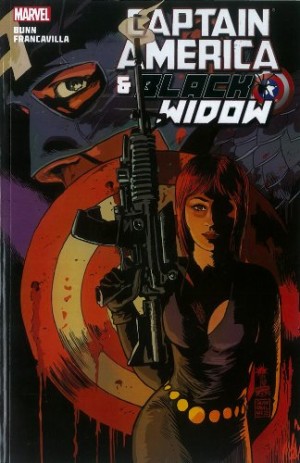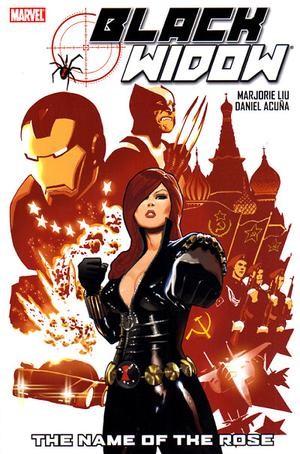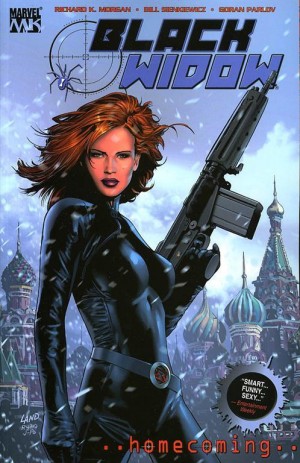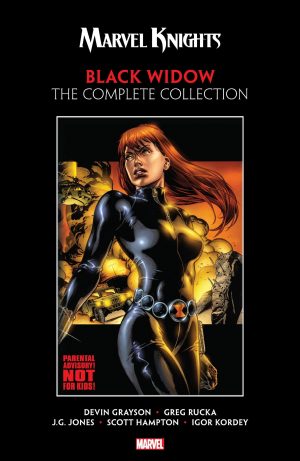Review by Ian Keogh
The strange, jerky nature of the Black Widow Epic Collections is due to her only ever having one brief solo series before the late 1990s, despite being introduced in 1964. As seen in Beware the Black Widow, it was hardly a creative success. However, the tail end of Marvel’s album sized graphic novel line saw several Black Widow graphic novels, the format accounting for the smaller than usual presentation of the pages here. The Coldest War provides this volume’s title, while teamings with Daredevil and the Punisher in Abattoir and Spinning Doomsday’s Web are supplied, but they’re all poor, the licence for more adult material resulting in exploitational poses rather than sophisticated storytelling. Follow the links for greater detail.
With regard to attempting to place the Black Widow in more credible spy thrillers they take their lead from Ralph Macchio’s 1981 collaboration with Paul Gulacy, thankfully still presented in black and white. It’s a highlight, featuring a capable and proactive Black Widow and attractive art. Macchio’s subsequent collaboration with George Pérez co-writing runs through Natasha Romanova’s past, much of which was then shrouded in mystery, permitting the construction of a viable thriller, although a fair portion is drawn by Bob Layton, not Pérez.
Some of this content previously saw print in Web of Intrigue, but this is a more complete collection of Black Widow’s 1990s outings, although missing her time with the Avengers. There are hints of Butch Guice’s later accomplishment and good layouts on an otherwise ordinary tale co-produced by Layton,
Mindy Newell’s two shorts are in the post-Soviet era, and she uses the uncertainties of Russia at the time as plot springboards. In the first someone’s killing Russians in the USA in a serviceable story with ugly art from John Stanisci. Sergio Cariello’s pages show a better artist in the early stages of his career, some pleasing, others not as good. He’s working on a tale about a person dedicated to outmoded ideas, and Newell’s version of Natasha’s personality is well conceived. Cefn Ridout and Charlie Adlard’s ‘Death Duty’ features a clever use of a character originating with Marvel’s UK office and the Black Widow now working with S.H.I.E.L.D. At the time it was promoted as a teaming with Nick Fury, but he’s seen more in Newell’s work than in what’s a decent globetrotting mystery with threads back to the 1930s.
The sample art is from Adlard, and a Randy Green page from the final story, a clever piece by Scott Lobdell during which what appears to be a simple enough bank robbery becomes something else. It’s told from a different and interesting viewpoint, and it hosts several surprises in making good use of what spy organisations do, but Green’s art is a mixed blessing. The pages look good, with a hint of manga about them, until taking into account the objectification of the two younger women featured.
This is a collection featuring some nice moments rather than any story that can be pointed to as representing the best of Black Widow. For that see her recommended 21st century outings. If you won’t be told, and really want to splash out on an Omnibus-sized hardcover, this is combined with Beware the Black Widow as The Black Widow Strikes.
